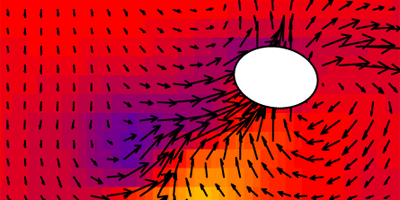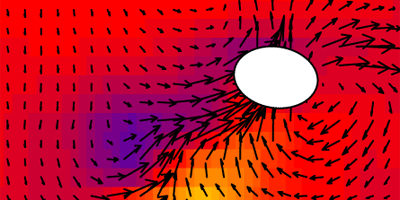Bubbles Leave Trouble in Their Wake
Bubbles rising in a pot of boiling water generate turbulence in their wake, but characterizing this fluid flow has been hindered by the opacity of bubble-filled water. A new technique using magnetic resonance imaging (MRI) can directly map the velocity field in the fluid. Observations of single and multiple bubbles are reported in Physical Review Letters, showing how turbulent-related vortices form in bubble wakes.
Fluids containing bubbles or solid particles are called multiphase flows. They are poorly understood because the bubbles or particles scatter the light that is typically used to measure fluid velocity. MRI offers a well-established, noninvasive method for visualizing the interiors of opaque materials, but it has often been too slow to capture highly dynamic flows.
In recent work, Alexander Tayler and his colleagues at the University of Cambridge, UK, showed that MRI could effectively observe multiphase flows if spiral imaging was used (here, “spiral” refers to the data sampling pattern imposed by the magnetic field gradient needed to spatially resolve the magnetic resonance signal). They have now quadrupled the speed of this technique by including compressed sensing, which is a mathematical procedure for extracting an image from sparsely sampled data. This allows MRI “movies” to be taken at frames per second. In preliminary tests on single bubbles, the new method captured sideways-moving vortices and related them to the side-to-side jittering that bubbles make as they rise. When the team looked at swarms of bubbles, they found that these vortices combine to form large-scale turbulent structures called vortex chains. – Michael Schirber





